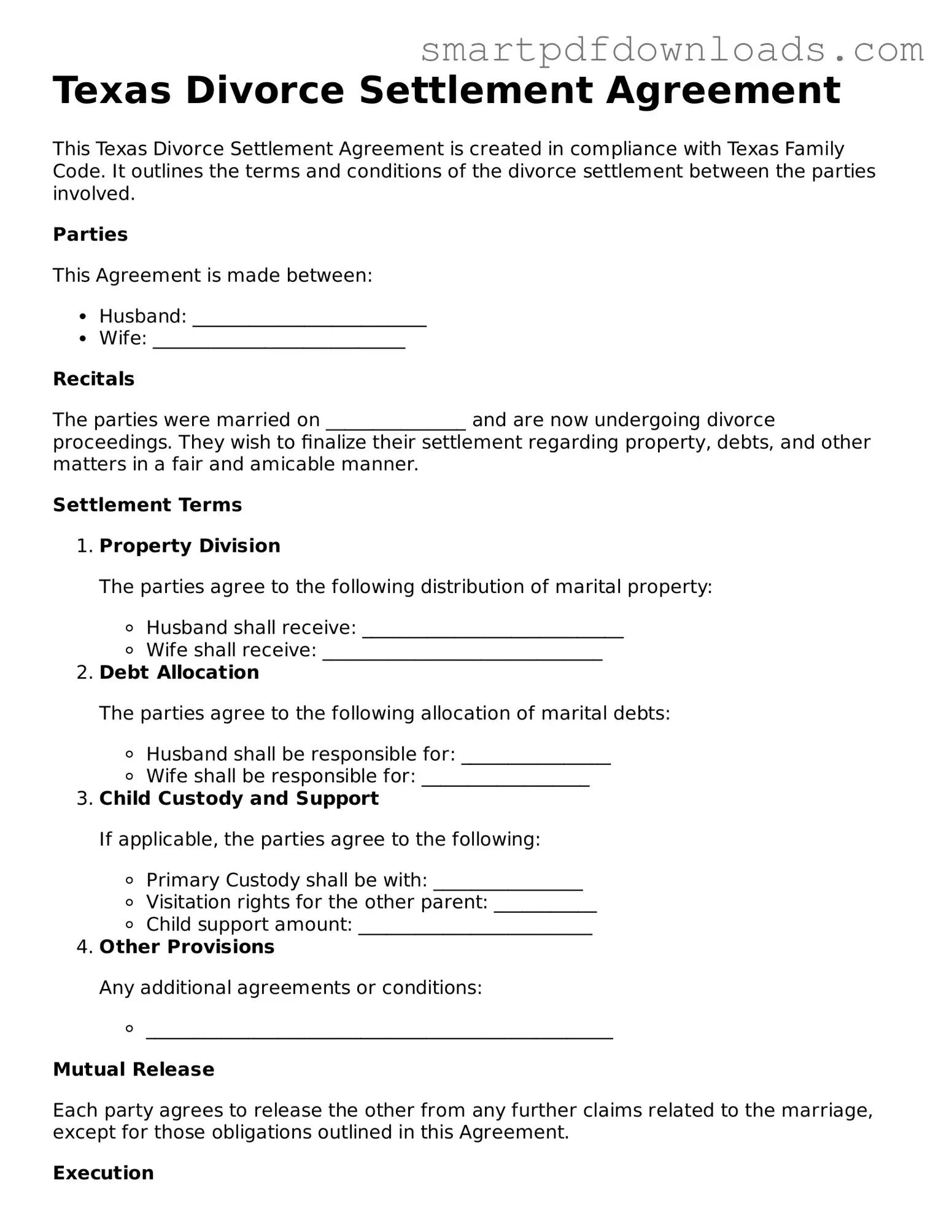Texas Divorce Settlement Agreement
This Texas Divorce Settlement Agreement is created in compliance with Texas Family Code. It outlines the terms and conditions of the divorce settlement between the parties involved.
Parties
This Agreement is made between:
- Husband: _________________________
- Wife: ___________________________
Recitals
The parties were married on _______________ and are now undergoing divorce proceedings. They wish to finalize their settlement regarding property, debts, and other matters in a fair and amicable manner.
Settlement Terms
- Property Division
The parties agree to the following distribution of marital property:
- Husband shall receive: ____________________________
- Wife shall receive: ______________________________
- Debt Allocation
The parties agree to the following allocation of marital debts:
- Husband shall be responsible for: ________________
- Wife shall be responsible for: __________________
- Child Custody and Support
If applicable, the parties agree to the following:
- Primary Custody shall be with: ________________
- Visitation rights for the other parent: ___________
- Child support amount: _________________________
- Other Provisions
Any additional agreements or conditions:
- __________________________________________________
Mutual Release
Each party agrees to release the other from any further claims related to the marriage, except for those obligations outlined in this Agreement.
Execution
This Agreement shall be legally binding upon signature by both parties.
HUSBAND: _________________________ Date: ________________
WIFE: ___________________________ Date: ________________
